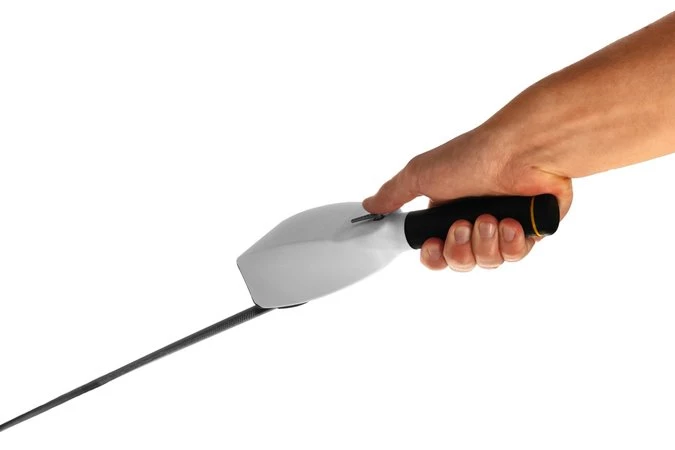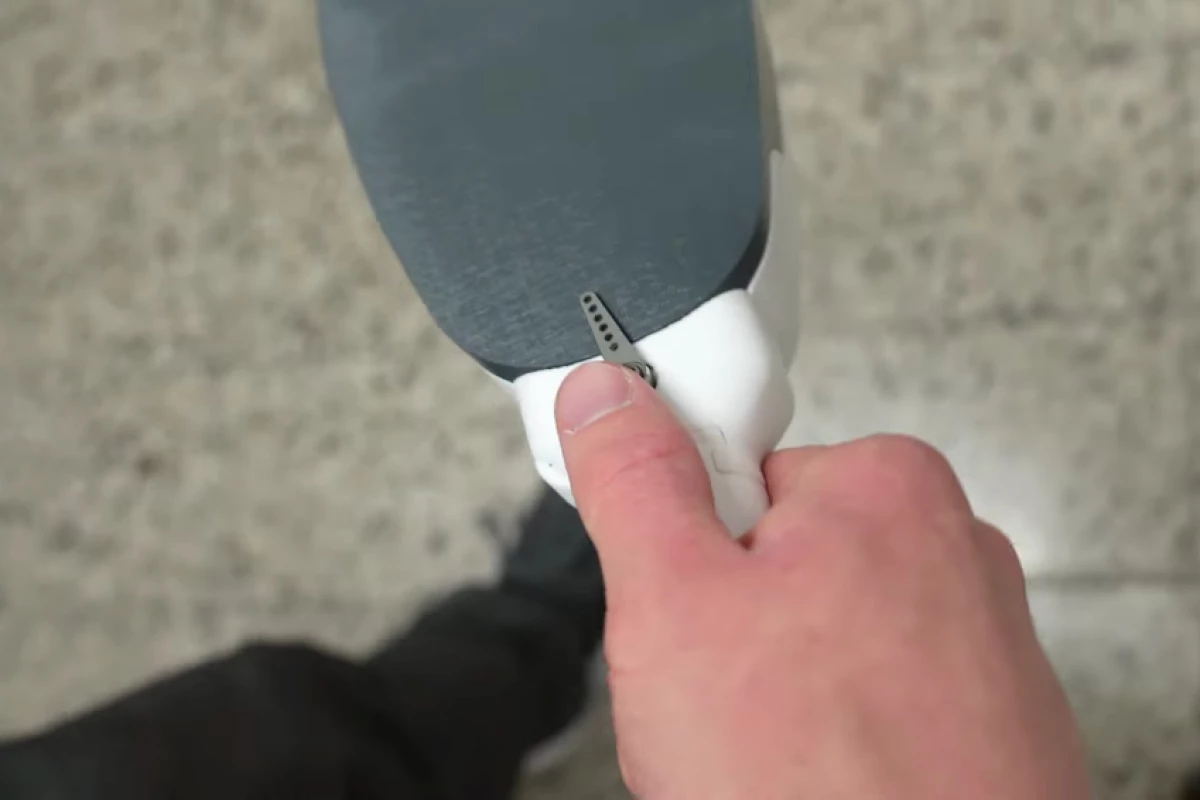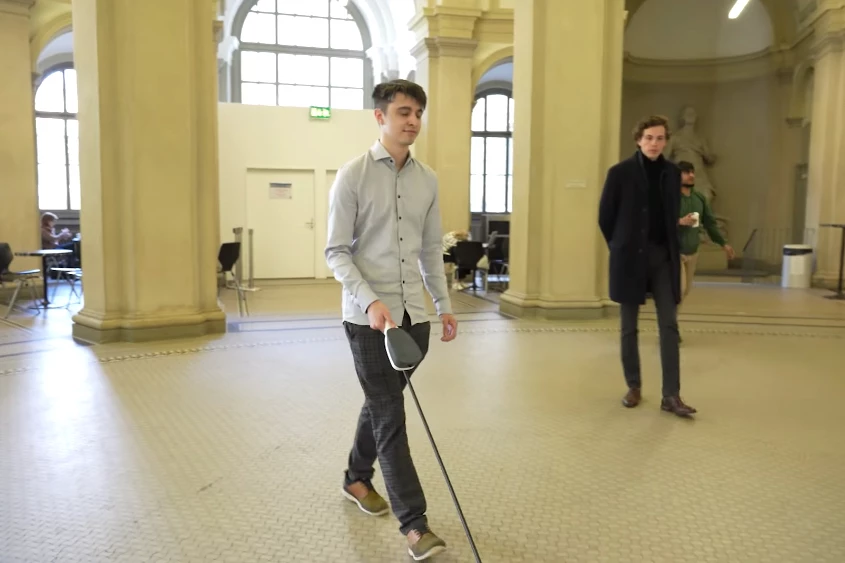Blind people using white canes are limited in how fast they can walk, as they have to wait for the tip of their cane to hit obstacles before going around them. The NextGuide cane is different, in that it preemptively steers users around obstacles that they have yet to reach.
ETH Zurich student Alexander Bayer student was inspired to invent the device after seeing how a blind classmate struggled with her conventional white cane. He is now commercializing the technology with three other students via ETH spinoff company NextGuide.
The cane itself consists of a foldable carbon fiber pole attached to a handle unit, the latter of which contains a 160-degree forward-facing camera, a haptic actuator, a physical tactile pointer that swings to the left or right, a microprocessor and other electronics.

As the user walks with the cane, the camera scans the environment in front of them. A machine-learning algorithm on the processor analyzes the images about 100 times a second, checking not only for obstacles but also for doors, stairs and crosswalks.
When an upcoming obstacle is detected, the handle vibrates to get the user's attention. Additionally, its pointer swings in the direction in which they should walk in order to avoid the obstacle – the user feels the pointer moving, as they keep their thumb resting on it at all times. The pointer guides them back on track once the path ahead is clear again.
Additionally, when the camera spots a door, stairway or crosswalk in front of the user, the cane alerts them to its presence via different vibrational cues in the handle. The user can also opt for audible alerts, if desired.
There's currently no word on when the NextGuide cane will enter production, but potential buyers can register for updates via the company website. The cane is demonstrated in the video below.
Sources: ETH Zurich, NextGuide





